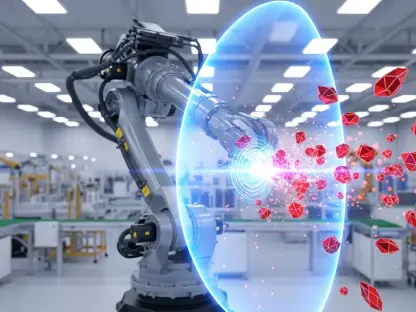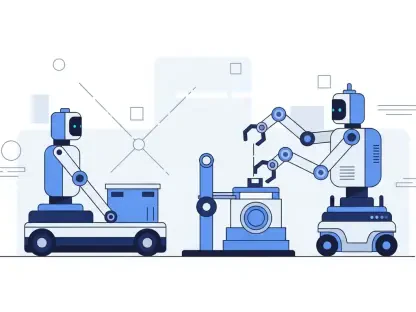In an innovative step toward sustainable manufacturing, Scania AB has started incorporating remanufactured gearboxes into new vehicles at its main assembly plant in Södertälje, Sweden. This initiative represents a major stride toward promoting environmental sustainability, following circular economy principles, and maintaining high-quality standards.
The Rationale Behind Remanufacturing
Environmental Benefits
Integrating remanufactured gearboxes offers substantial environmental advantages. Producing parts from scratch typically uses significant resources and generates considerable emissions. By contrast, remanufactured gearboxes reduce material usage by about 50 percent and carbon emissions by approximately 45 percent. These reductions are essential for addressing issues like resource scarcity and environmental degradation. The automotive industry is under increasing pressure to adopt greener practices, and this shift toward remanufacturing demonstrates a concrete step in that direction.
Reducing material usage is not only environmentally beneficial but also economically advantageous. By cutting down on raw material demands, manufacturers can mitigate the depletion of natural resources and reduce their environmental impact. Moreover, the reduction in carbon emissions means that companies like Scania can make significant progress in meeting stringent environmental regulations and climate goals. In the long run, such practices help in cultivating a more sustainable and responsible industry, setting a precedent for other sectors to follow, thereby amplifying the positive impact on the planet.
Alignment with Climate Goals
The move to remanufacture gearboxes aligns seamlessly with global climate objectives. Increasing regulatory pressure requires the automotive industry to meet strict environmental standards. By adopting these practices, Scania aims to significantly lower its carbon footprint and contribute to overarching climate goals. This shift also showcases how the industry can pivot to more sustainable manufacturing practices without compromising on quality. With climate change being a major global concern, initiatives like these not only fulfill regulatory requirements but also resonate with the growing consumer demand for sustainability in products and their production processes.
Scania’s approach serves as a model for how businesses can balance economic and environmental responsibilities. The integration of remanufactured components within new vehicles highlights the potential for achieving high-quality manufacturing while adhering to climate commitments. This move is a testament to the feasibility of integrating circular economy principles into mainstream industrial processes. It underscores that sustainability need not come at the cost of performance or consumer satisfaction but rather can enhance a company’s reputation and commitment to global environmental well-being.
Quality and Testing Protocols
Rigorous Quality Assurance
Quality assurance is a critical component in Scania’s remanufacturing process. The remanufactured gearboxes undergo the same rigorous tests as new gearboxes, monitoring around 100 different quality and performance parameters. The tests ensure that the remanufactured gearboxes perform “as good as new,” addressing potential concerns about the reliability and durability of remanufactured parts. This thorough testing regime is essential in maintaining the trust of consumers and validating the remanufacturing process as a viable alternative to traditional part production methods.
The testing protocols employed by Scania are comprehensive and stringent, leaving no room for discrepancies in performance and quality. By adhering to these guidelines, the company ensures that each remanufactured gearbox delivers the same reliability and longevity as new ones. This commitment to quality not only reassures consumers but also sets a high standard for the industry, encouraging other manufacturers to adopt similarly rigorous testing methods. In doing so, Scania demonstrates that sustainability can be achieved without sacrificing the excellence that customers expect.
Performance Validation
In extensive quality and function tests, remanufactured gearboxes have consistently passed all assessments. This validation is crucial in maintaining customer trust and proving that sustainability efforts do not come at the expense of performance. By implementing such stringent testing protocols, Scania underscores its commitment to delivering high-quality, reliable products. This rigorous validation process also serves as a pivotal endorsement of remanufacturing, indicating that environmentally friendly practices can align with, and even enhance, industrial standards.
The successful performance of these remanufactured components highlights the potential for broader application within the industry. By consistently meeting or exceeding the benchmarks set for new parts, remanufactured gearboxes make a compelling case for widespread adoption. This paradigm shift not only enhances the sustainability of automotive manufacturing but also paves the way for other sectors to explore remanufacturing. It positions Scania as a leader in innovative practices, providing a successful model for achieving both environmental and economic objectives.
The iReGear Project
Collaborative Research Efforts
The iReGear project is a collaborative effort including Scania, KTH Royal Institute of Technology, and Scandinavian Transmission Service AB. This project explores the feasibility and advantages of integrating remanufactured components directly into new production lines. This collective effort brings together academic insights and industrial expertise to refine remanufacturing processes. The synergy between these diverse yet complementary sectors ensures that the project can harness a wide range of knowledge and experience, ultimately leading to more effective and practical solutions for sustainable manufacturing.
The collaboration within the iReGear project exemplifies how partnerships between industry and academia can drive meaningful advancements. By leveraging the strengths of each partner, the project can address the technical and logistical challenges of remanufacturing. The involvement of KTH Royal Institute of Technology ensures rigorous academic validation of each step, while Scania’s industrial expertise helps in practical application. This collective effort not only advances the state of remanufacturing but also sets a precedent for future collaborations aimed at resolving complex global issues like sustainability.
Evidence-Based Approach
Assistant Professor Farazee Asif of KTH highlights that this research offers the first solid evidence supporting the concept of an integrated manufacturing system that adheres to circular economy principles. By validating these processes, the project aims to demonstrate that resource efficiency and sustainability can coexist with high production standards. This evidence-based approach is pivotal in persuading more manufacturers to adopt remanufacturing practices. Empirical data and rigorous testing provide tangible proof that these methods are not only feasible but also highly effective in achieving sustainability goals.
The research conducted under the iReGear project sets a new standard for systematic and scientific validation within the industry. By providing concrete evidence of the benefits and feasibility of remanufacturing, the project dispels any lingering doubts or misconceptions. It encourages other manufacturers to explore similar practices, backed by proven success. This approach ensures that the adoption of remanufacturing is based on solid, empirical findings, fostering a more informed and confident transition to sustainable manufacturing practices across the automotive industry and beyond.
Challenges and Opportunities
Integration into Mainstream Production
One of the significant challenges is integrating remanufactured components into the mainstream production of new vehicles. Fredrik Nilzén, head of sustainability at Scania, emphasizes that including these parts in primary production lines rather than relegating them to aftermarket sales is crucial. This integration is vital for making remanufacturing a standard practice in the industry. Overcoming the technical and logistical hurdles requires meticulous planning and adaptation within existing manufacturing frameworks. However, the potential long-term benefits make these efforts worthwhile.
The successful integration of remanufactured components into mainstream production lines serves as a proof of concept for the broader industry. It showcases that high-quality manufacturing and environmental sustainability are not mutually exclusive. This effort requires overcoming skepticism and operational challenges but can lead to a transformative shift in industrial practices. By establishing remanufacturing as a core component of production, Scania sets a benchmark for other companies, encouraging them to undertake similar initiatives and fostering a more sustainable future for the entire industry.
Economic Efficiency
Remanufacturing also presents economic benefits by reducing production costs and lowering resource usage. By saving materials and cutting emissions, remanufacturing offers an economically efficient alternative to traditional manufacturing. These savings can potentially lead to reduced costs for both manufacturers and consumers, further incentivizing the adoption of sustainable practices. Economic efficiency is a compelling reason for businesses to invest in remanufacturing, as it aligns with both their financial goals and environmental responsibilities.
The economic advantages of remanufacturing extend beyond immediate cost savings. By reducing dependency on raw materials, companies can shield themselves from the volatility of resource prices. This stability contributes to more predictable and sustainable business operations. Additionally, the lower production costs can foster a competitive edge, enabling manufacturers to offer more affordable products to consumers. The dual benefits of environmental sustainability and economic efficiency make remanufacturing a highly attractive avenue for modern manufacturers, supporting long-term robustness and sustainability.
Industry-wide Impact
Promoting Circular Economy
The integration of remanufactured parts highlights the auto industry’s shift toward sustainable manufacturing and circular economy concepts. By reusing resources, manufacturers can significantly reduce waste and production costs. This shift is not only a response to regulatory pressures but also a proactive step toward long-term sustainability goals. The circular economy model promotes a more ethical and responsible use of resources, ensuring that materials are continuously cycled back into production rather than discarded.
Scania’s initiative exemplifies the transition toward a circular economy within the automotive sector. It demonstrates that sustainability and business profitability can coexist, fostering a new paradigm where waste is minimized, and resource efficiency is maximized. This approach encourages other companies to adopt similar sustainability measures, collectively driving the industry toward a more responsible and environmentally friendly future. By embracing circular economy principles, the automotive industry can play a pivotal role in combating global resource challenges and environmental degradation.
Future Vision
In a cutting-edge move aimed at promoting sustainable manufacturing practices, Scania AB has started the incorporation of remanufactured gearboxes into new vehicles at its principal assembly plant located in Södertälje, Sweden. This forward-thinking initiative serves as a significant leap towards advancing environmental sustainability by adhering to the principles of a circular economy. Scania’s commitment to this innovative approach reflects their dedication to minimizing environmental impact while ensuring high standards of quality and performance in their vehicles.
By integrating remanufactured parts, Scania is not only reducing waste but also conserving resources and energy that would otherwise be required for manufacturing new components from scratch. This strategy aligns with global efforts to reduce carbon footprints and makes a significant statement about the company’s role in the automotive industry’s shift towards greener practices. Scania’s inclusion of remanufactured gearboxes is a prime example of how businesses can lead by example in the ongoing quest for sustainable solutions without compromising on the reliability and excellence their customers expect.









